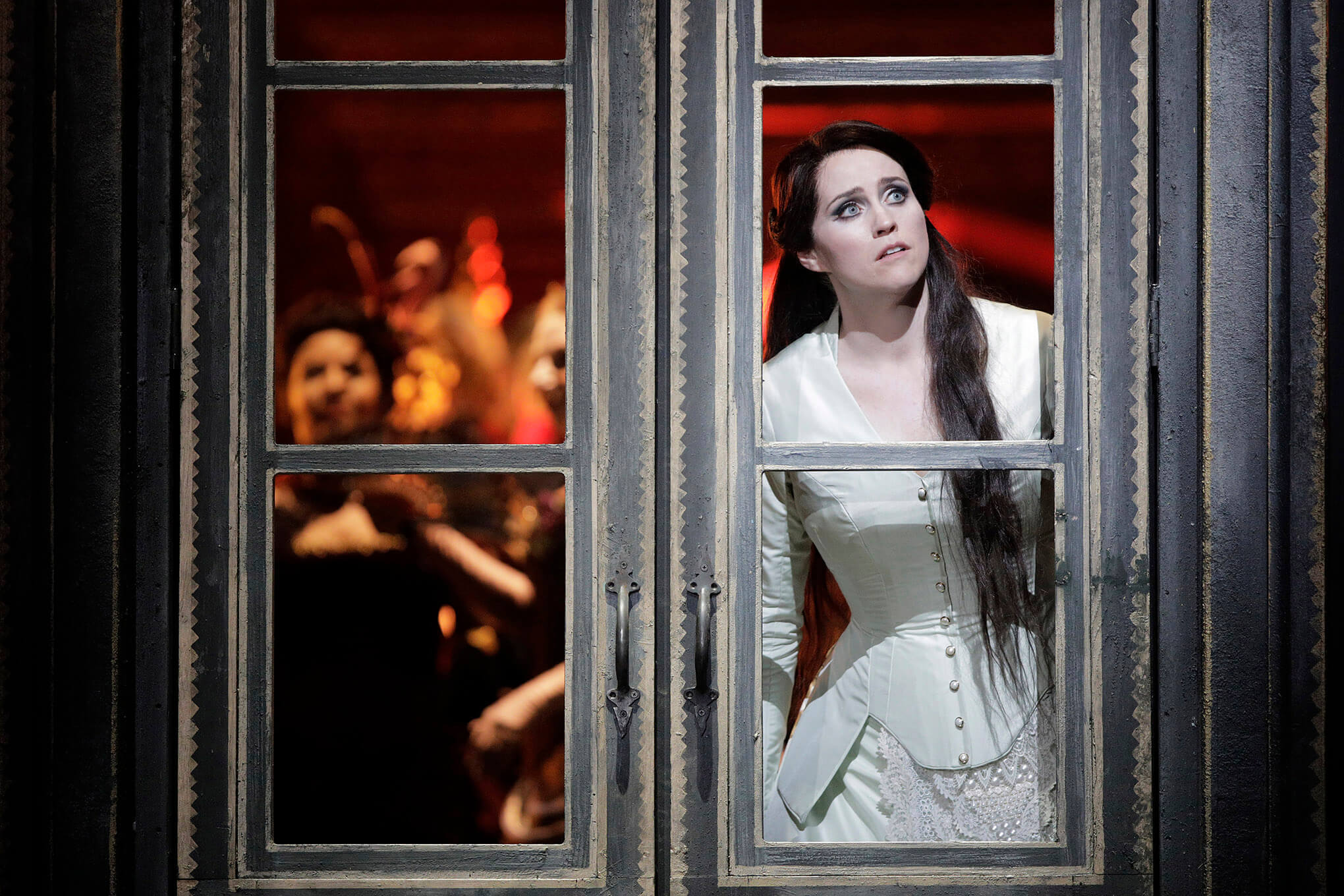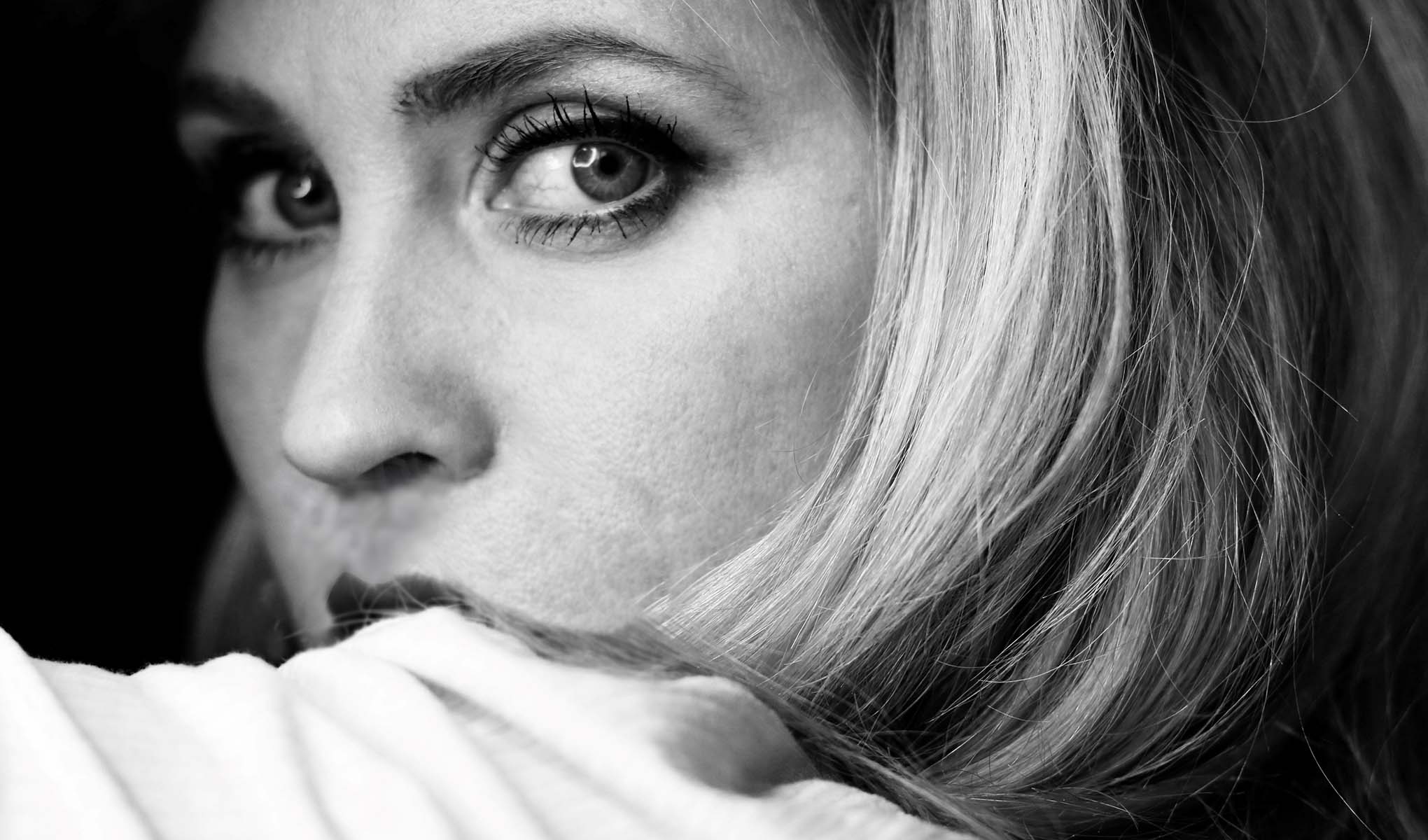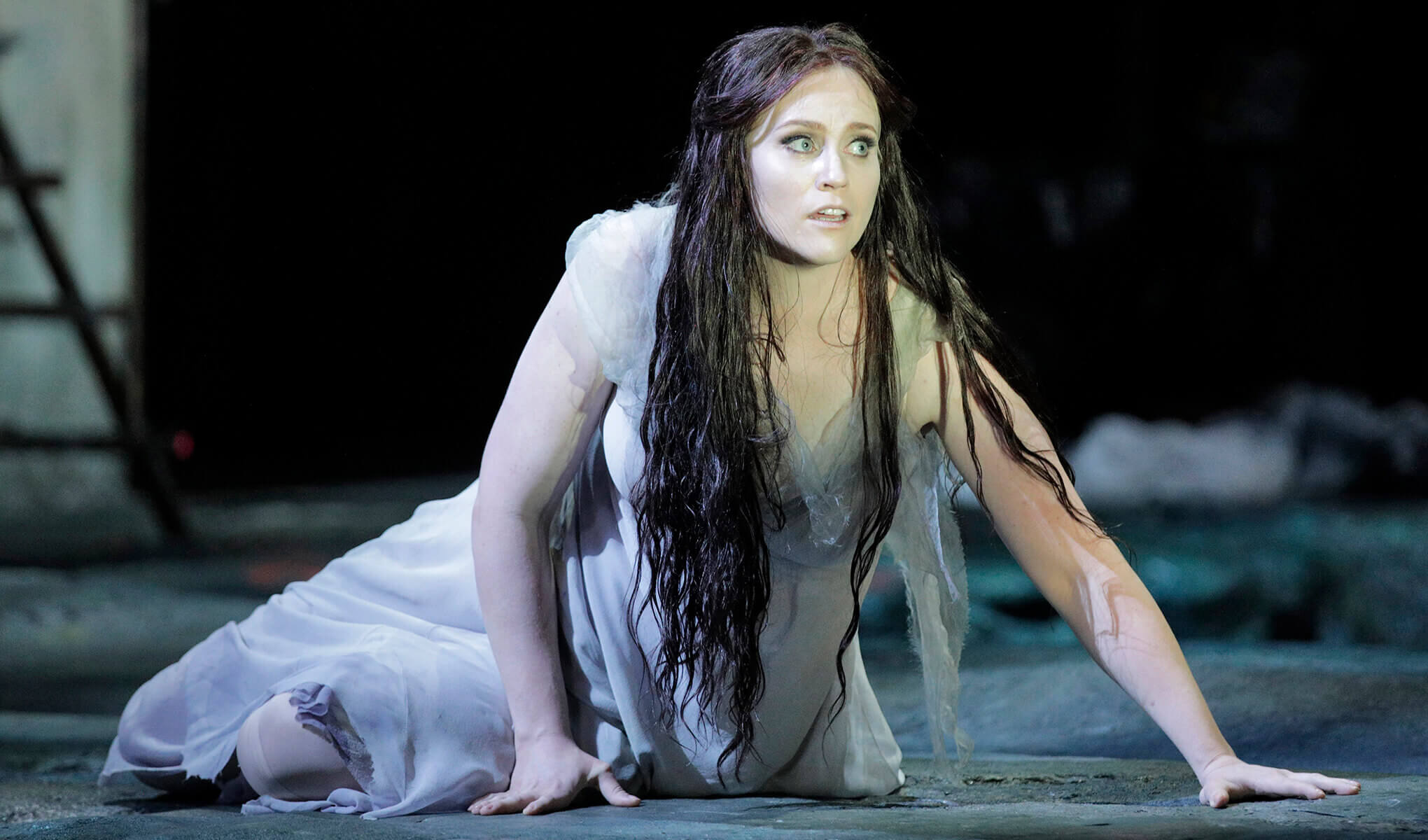Finding Home with Soprano Rachel Willis-Sørensen

Willis-Sørensen, now one of America’s foremost sopranos, is set to take the stage this September in Live and in Concert: The Homecoming, a celebration of San Francisco Opera’s return to the War Memorial Opera House, its longtime residence. For 20 months, the company’s “home” had been off-limits, due to pandemic-related closures.
That’s ostensibly what this interview is supposed to be about: home. But the idea of home—a fixed place, a refuge with walls and a door—can be a complicated thing for an opera singer.
Now that theaters are finally reopening, Willis-Sørensen is increasingly on the road. Just two days prior, she had performed a concert in Switzerland. The calendar ahead is stacked with concerts, recitals, and operas, each one in a different corner of the globe.
Willis-Sørensen, reached via Zoom from Denmark, jokes that she has to practice saying that she now lives in Copenhagen. It’s new. And her residence may still change. What home really is, she explains, is her own body—her own voice. And it’s been a long journey to find it.
She still remembers one of her earliest voice classes, around age 16. The topic of the lesson? Vocal polyps and lesions, presented in graphic detail, with pictures of moist pink tissue bulging with bumps and sores. It was scary at the time, she says—but funny in retrospect.
The teacher had called Willis-Sørensen to the front of the class to sing a warm-up. Each note forced her to sing higher and higher and higher.
It was only a couple years prior, around age 14, that Willis-Sørensen remembers encountering opera for the first time on a public-access TV show: A young girl was singing, and the music struck Willis-Sørensen as beautiful. She decided to give it a try. But it hurt to sing so high.
Now, in front of a voice class—with the memory of cysts and lesions and vocal injuries fresh in her mind—she was attempting to sing those notes again. “Eventually, I couldn’t scream my chest voice any higher,” Willis-Sørensen explains. “So I flipped into what I thought was a make-fun-of-opera voice.”
But what was meant as a joke turned out to be a revelation. Willis-Sørensen remembers the teacher being exasperated but excited. She told her: “This is your voice.”
Willis-Sørensen says she always had a knack for song. When the Disney animated musical The Little Mermaid came out in 1989, Willis-Sørensen was only a small child—but soon, she knew all the words to the song “Part of Your World.”
That led her to the realization that she was a singer, that that was her identity. She remembers confiding in her mother, “I'm a singer. Don’t tell anyone. It’s a big secret,” only to feel betrayed when Mom shared the news.
Willis-Sørensen was brought up in the Tri-Cities area of Washington state. Her upbringing was religiously conservative: Her family belonged to the Church of Jesus Christ of Latter-Day Saints. But while her father was a chemical engineer and her mother worked in pottery, they filled their home life with music. Her father was especially passionate: He built guitars and other string instruments. Willis-Sørensen remembers gatherings where the family would sing along to the ukulele and end the evening in laughter.
Her parents always encouraged her, Willis-Sørensen says, never questioning her conviction that she was a singer. “I remember them saying to me, ‘Most people, when they're in front of a crowd, they shrink. But for some reason, you grow.’”
But not everyone shared her parents’ confidence that singing was a viable career option. In 10th grade, she recalls one of her assignments was to create a career map. Willis-Sørensen was prepared to sketch out a life as a performer, when her teacher gently corrected her: “That's fine, but that's not a real job. So you have to come up with something else. And I recommend that you be a dental hygienist. Maybe you can be a dental hygienist who sings.”
It was the wrong advice for her, Willis-Sørensen says. But she has no hard feelings: She understands why the teacher suggested that career path. After all, it wasn’t smooth sailing all the way to stardom.
Compared to performers who train since childhood to sing opera, Willis-Sørensen says she had a late start. She was 17 when she started studying classical voice. And college was right around the corner.
“I didn't get into any of the programs I had auditioned for because I only had studied for a year and my voice was kind of a mess,” she says. She chose a school that didn’t require an audition and pursued a degree in music education.
She paid for voice lessons by helping her teacher fix up her house. She would later take jobs at a bakery, as a cleaner, and even at a Subway restaurant to help pay for school.
“When I worked in the bakery, I had to get up before four in the morning,” she says, adding with a weak laugh: “I wasn’t sleeping great in that period of my life.”
But she credits those experiences—and her family—with giving the work ethic she needed to survive in the opera industry. And then there was that time when she was repainting her voice teacher’s closet.
Her teacher’s voice reached her through the walls. She was singing and accompanying herself on the piano. It was life-changing.
“That was the first time I heard Samson et Dalila, ‘Mon cœur s'ouvre à ta voix.’ I just bawled. I cried,” Willis-Sørensen says. She had never had such a visceral reaction before. “This was one of the first times that ever happened. And I just remember thinking: There’s so much power in this art form to fix people's broken hearts.”
That teacher encouraged her, told her she had a one-in-a-million voice, the kind that could tackle both lyrical opera and the heavy demands of Wagnerian music. The teacher lent her opera recordings. She talked her through opera plots. Inspired, Willis-Sørensen went to the library to check out more music.
“The first classical album I ever checked out was Charlotte Church,” Willis-Sørensen laughs. “I just didn't know what I was doing.” But seeing a young artist like herself on the album proved inspiring. Willis-Sørensen kept going back for more.
She eventually stumbled across a library recording of Wagner’s 1876 epic Siegfried, a behemoth of an opera that can run upwards of four hours. It was the first Wagner she remembers hearing, outside of “Ride of the Valkyries.”
“I brought it home. I started listening to it, and I was so offended. I was like, ‘That teacher told me that this is me?!’” Willis-Sørensen bursts into a peal of laughter. She remembers she couldn’t make it through the entire recording. “I was like, ‘This is not what I am at all. I am not a character tenor!’”
But Wagner would end up playing a major role in Willis-Sørensen’s career. Under the mentorship of Darrell Babidge—her former professor at Brigham Young University—Willis-Sørensen would start topping international competitions.
In 2010, at age 25, she won the Metropolitan Opera National Council Auditions by singing excerpts from Wagner and Mozart. By 2014, she swept Operalia: The World Opera Competition, claiming three of its top prizes.

It wasn’t long before Willis-Sørensen was touring the world’s great stages, from London to Vienna to Tokyo. In 2015, she made her San Francisco Opera debut in Wagner’s Die Meistersinger von Nürnberg.
But as she was cast more and more in Wagnerian roles, she started to notice her voice didn’t feel as agile as it once did. She longed to branch out, to sing music that might stretch her limits. New challenges called to her.
“I have a decently loud instrument. But it’s really not so bombastic that the only thing I can sing is florid Wagnerian passages,” Willis-Sørensen says. She started to wonder if her casting had more to do with what she looked like than what she sounded like.
“I’m almost six feet tall. I’m blonde. I’m kind of stacked,” she says. “I think they could hear Wagner before I opened by mouth.”
Singing, Willis-Sørensen believes, is not simply about technique or muscle coordination. “It's my opinion that singing is about expressing your soul,” she says. And she found that her soul was pulling her more toward the lyrical realm—toward composers like Giuseppe Verdi and Antonín Dvořák.

That’s how she returned to San Francisco Opera in 2019 in the title role of Dvořák’s fairy-tale opera Rusalka. She had always been told that she wasn’t cut out for the lead: She had been guided more toward the role of the opera’s Foreign Princess, a secondary character that required Wagnerian heft.
But playing Rusalka, the water nymph who yearned to be human, felt like coming full circle—reminding Willis-Sørensen of her days singing along to The Little Mermaid. It was the kind of role she dreamed of singing.
“This experience in San Francisco was the best of my career so far. I think of it fondly all the time,” she says. “It was so much therapy in a way, learning about myself via this character.”
Willis-Sørensen is outwardly confident, thoughtful with a cheeky sense of humor: She often breaks into caricatures of herself, adopting voices and accents for added drama. But she confesses she often feels like a “weird sore thumb in the world,” struggling to fit in.
Being on the road has meant ending up in countries where she barely speaks the language. It’s easy to feel like an outsider. Plus, as the mother of three children—two of whom are twins—she is conscious of taking up space in a way others might find inconvenient.
In the character of Rusalka—a non-human character who, again and again, faces rejection—Willis-Sørensen says she found a mirror for her own struggles.
“That's the funny thing. I've never related more to a character than to this weird character that is not a human,” Willis-Sørensen says. “As I was going through it, I was like, ‘Oh my gosh, I have felt all of these feelings: the rejection, the self-loathing.’”
She poured herself into the role, even downloading the DuoLingo app to polish her Czech outside of work. It became a passion. “I've not generally had the experience that, when the rehearsal is over and it is time to go home, that you’re disappointed. But it was like that everyday.”
And Willis-Sørensen saw that passion reflected in her colleagues. When she looked in the orchestra pit, she saw conductor Eun Sun Kim—then a newcomer to San Francisco—singing along to the nymphs on stage.
“I just remember looking at her, being dumbfounded,” Willis-Sørensen says. “She knew every Czech word.”
Then there was her co-star, mezzo-soprano Jamie Barton. They had first met back when Willis-Sørensen was a young artist training at the Houston Grand Opera. “I love her. I'm huge fan of her artistry and her sense of humor, her personality. We get along very well.”
The chemistry the three artists developed over the course of Rusalka would ultimately be transformative. Six months later, Kim would be named San Francisco Opera’s newest music director. And since her role debut, Willis-Sørensen has continued to sing Rusalka around the world. She even plans on revisiting the music for the upcoming Homecoming concert.
Live and in Concert: The Homecoming will mark the first on-stage reunion for Kim, Barton, and Willis-Sørensen since that 2019 production. The event name feels especially apt for Willis-Sørensen.
“For me, coming to San Francisco always feels kind of like a return home, even though I didn't grow up in California. But being from the West Coast, this is the most important opera house in the west, you know?”
Already she’s been rehearsing the evening’s lineup: a mix of Verdi, Donizetti, Bellini, and more. Some of the music is new to her.
“The bel canto style—Bellini, Donizetti—I have very little experience in, and I'm thrilled to be venturing into that repertoire now,” she says. Initially she was concerned about the duet from Donizetti’s Anna Bolena she is slated to perform with Barton.
“I was like, ‘Oh, do I dare?’ But then the more I studied it, the more I was like, ‘No, I have to do it. I love it so much,’” she explains.
It all takes her back to what she loves about singing: the chance to explore and experiment, finding new facets to the person she is on the inside.
“My singing is my soul. I don't sing as a means of making sound. I sing as a means of communicating the element of myself that was not taught to me, that is inherent,” she says.
So even as she crosses oceans and continents to perform, the Homecoming concert lives up to its name for Willis-Sørensen.
“If I'm not with my children, the second best thing is on a stage,” she says. “That's where I belong more than anywhere else.”
See Rachel Willis-Sørensen in Live and in Concert: The Homecoming, at the War Memorial Opera House on Friday, September 10. You can learn more about Willis-Sørensen by visiting her website or following her on social media.

